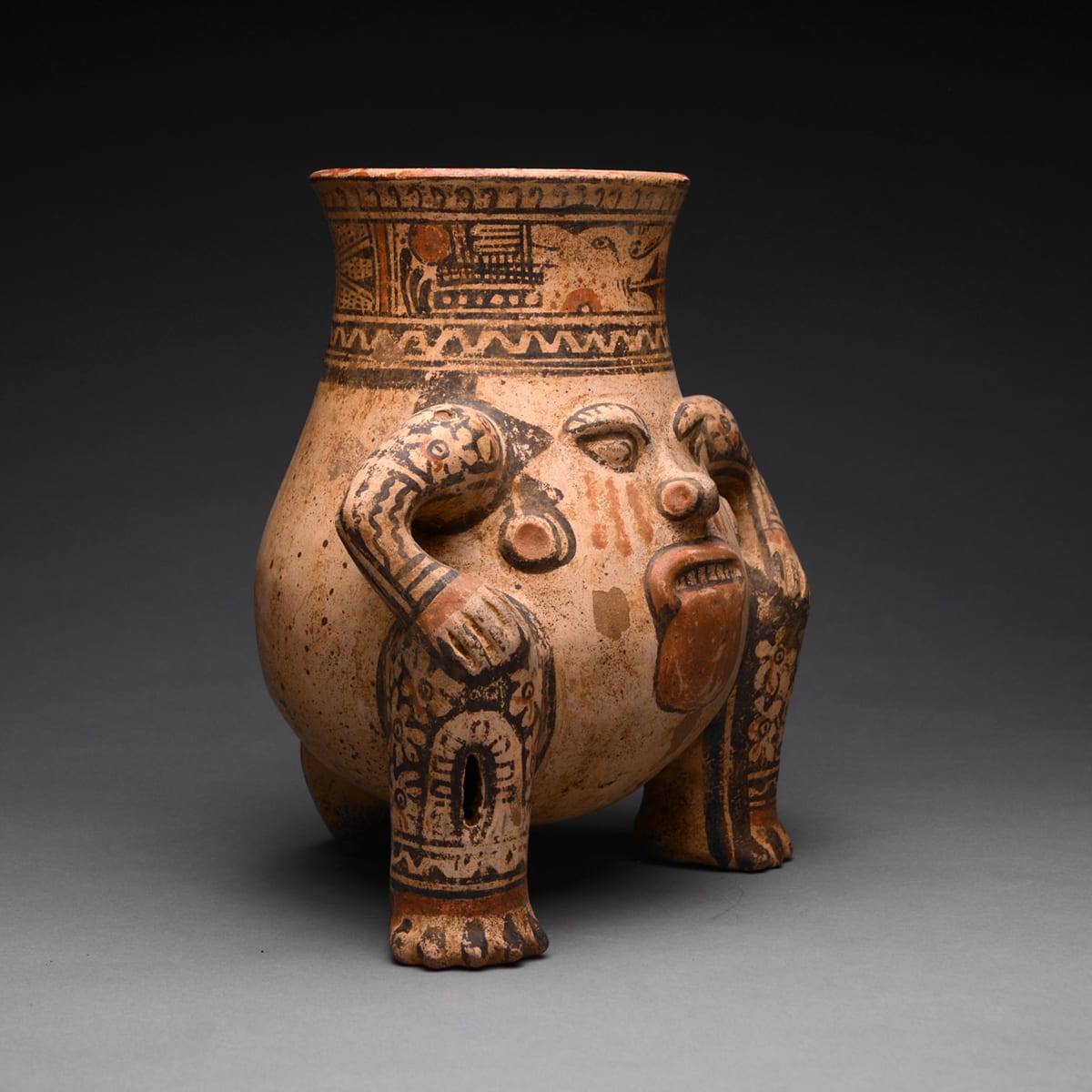Guanacaste-Nicoya Tlaloc Effigy Vessel, 1200 CE - 1400 CE
Terracotta
height 25.4 cm
height 10 in
height 10 in
PF.3541
Further images
This Nicoya polychrome vessel belongs to the pataky polychrome type, the striking black-and-red-on-white pottery. This elite-associated ceramic may have been manufactured for rituals or ceremonies, which were to ensure agricultural...
This Nicoya polychrome vessel belongs to the pataky polychrome type, the striking black-and-red-on-white pottery. This elite-associated ceramic may have been manufactured for rituals or ceremonies, which were to ensure agricultural prosperity and fertility. These pear-shaped vessels had mythological symbolic contexts, often showing gods and mythological animals. In a high-relief style, the front of the vessel depicts an image of an important Meso-American god, Tloloc--a rain God who brought life to the soil of Ancient Costa Rica. Its wide-open eyes are producing streams of "tears," a symbolic portrayal of water and rain. The vertical elongation of the mouth seems to represent a beard-like image, which is a common attribute of Tloloc. Wearing large earpools and with its elaborately decorated arms firmly resting on the legs, the vessel successfully generates the divine and austere aura appropriate for a powerful god. Furthermore, the band that encircles the neck of the vessel portray zoomorphic images that are possibly associated with gods and the spiritual realm. The warm earthy colors delight our eyes with a sense of serenity, and the complementing black paint defining features and decorative patterns adds a strong visual impact to this magnificent sculpture. As we contemplate this ancient evidence of belief, we recognize that our desire for prosperity remained the same throughout the obstacle of time.





